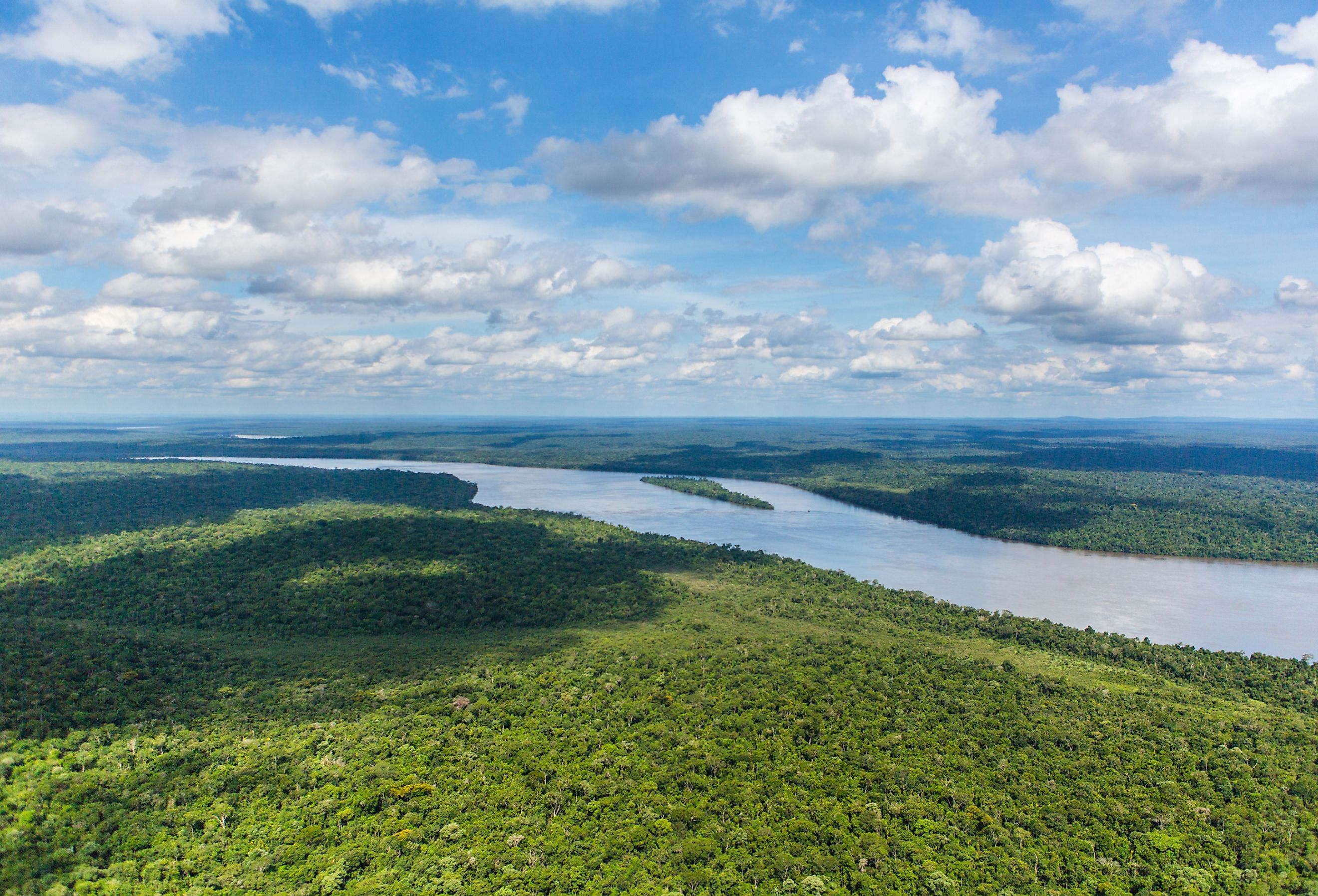
Iguazu River
The Iguazu, or Iguassu, River originates from headstreams in Serra do Mar. While this gorgeous body of water is known mainly for the majestic Iguazu Falls, it is also one of South America’s most significant rivers. Flowing primarily between Brazil and Argentina and spanning approximately 1,320 kilometers, this Parana River tributary plays a critical role in the region’s geography and ecosystem.
The Course Of The Iguazu River
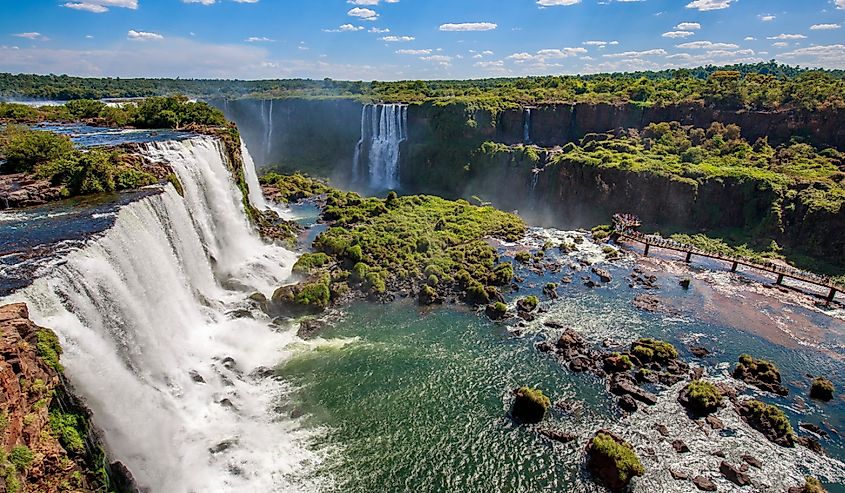
The Iguazu River stretches from Brazil's Serra do Mar mountain range, flowing through Santa Catarina and Parana before heading towards the falls. At this point, it continues flowing until it merges with the Parana River. The Iguazu Falls, Earth's most extensive waterfall system, split the river into lower and upper Iguazu. Most of the river water flows through Brazil, while most of the falls are located in Argentina. Where the Iguazu River meets the San Antonio River, it forms a natural border between the two countries.
Several smaller streams and rivers sustain the Iguazu River along its course. These tributaries help keep the river full, especially during drought or dry seasons. The river needs a consistent flow to ensure the survival of fragile ecosystems.
Geography And Ecosystem Of The Iguazu River
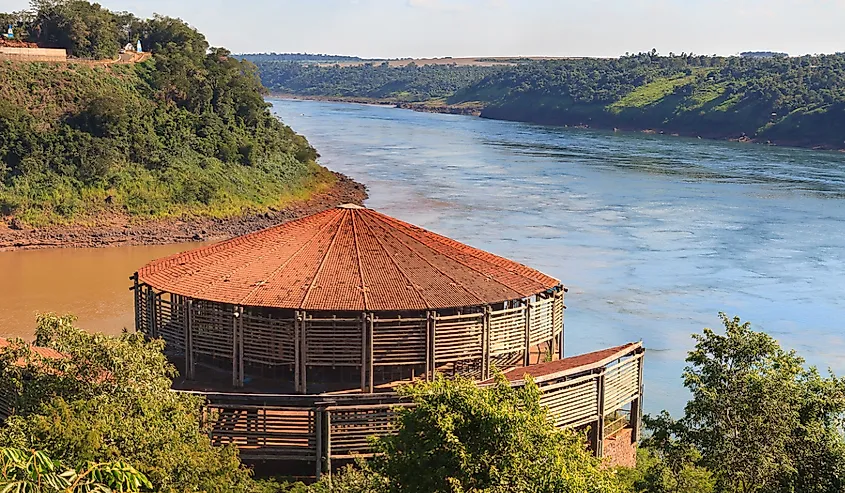
Where the ground below the river dips straight down, the enchanting Iguazu Falls begins. Dramatically dropping over the escarpment, the water splits into around 275 individual waterfalls.
The region surrounding the river and the falls is as magical as the water. The spectacular tropical rainforests hide elusive jaguars and caimans, while colorful toucans inhabit the tree branches. Moving slowly over the forest floor, you may spot lazy giant anteaters while howler monkeys play around some of the 2,000 species of vascular plants.
The river is home to around 100 fish species, many of which remain unidentified. The most commonly encountered fish species include characiforms, cichlids, and catfish.
UNESCO appointed the Iguazu National Park and its Brazilian counterpart as a sanctuary for the many endangered species that inhabit the area around the falls. These animals include the giant otter, Harpy eagle, pumas, alligators, and capybaras.
Historical Significance Of The Iguazu River
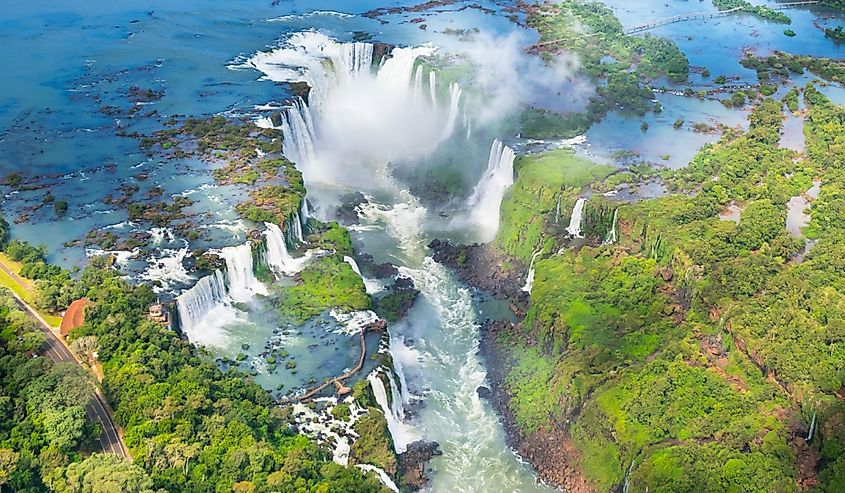
Indigenous communities in the region, in particular the Guarani culture, have a deep connection to the Iguazu River. The Guarani also came up with the name Iguazu, meaning ‘big water.’ The river provides them with water but holds immense spiritual meaning too. The strong bond between humans and the river is explored in the countless legends and folktales from those whose lives revolve around the river.
One of these legends says that a god wanted to marry a woman named Naipi. She fled from him to be with her lover, Taroba. While they tried to escape her fate in a canoe, the deity cut the river in pieces. This created the waterfalls but also cursed the doomed lovers to a steep fall from which they could not escape.
Historically speaking, Eldoradense hunter-gatherers inhabited the land surrounding the river and falls 10,000 years ago. In 1,000 C.E. they were displaced by the Guarani, who introduced new farming methods and technologies. Eventually, the Guarani people lost their place to the Spanish and Portuguese conquest leaders in the 16th century.
The Geological History Of The Iguazu Falls
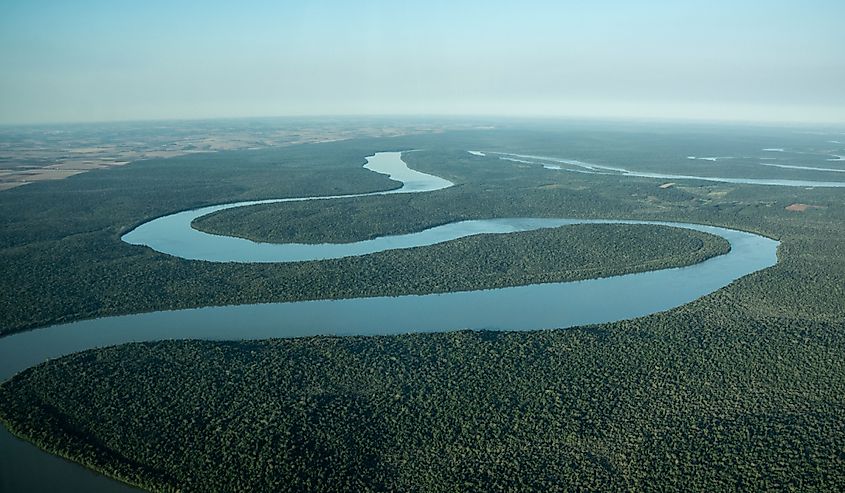
The history of the Iguazu Falls is simply fascinating. Around 135 million years ago, basaltic lava flooded the site of the falls after an impressive volcano eruption. Three layers of basalts make up the formation of the area, which contributes to the staircase shape of the falls. The waterfalls formed when the Iguazu River eroded the terrain and eventually the three basalt layers.
The Iguazu River And Falls Today
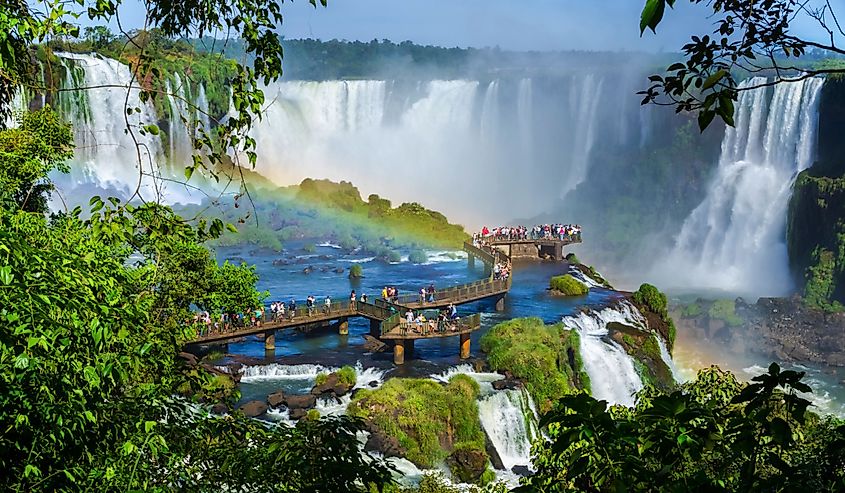
The Iguazu River provides a great opportunity to discover the rainforests while fishing (with a special permit). However, the waterfalls are the real draw. Both Brazil and Argentina continue to capitalize on tourists' interest, and several viewpoints and activities have since sprung up here.
On the negative side, the construction of dams in the river's upper reaches has caused fluctuations in the water levels. This could potentially harm the local ecosystem, particularly the rare and endangered species in the national parks.
Conclusion
Fortunately, both countries have established conservation efforts to help maintain and preserve the beauty and animal life in the Iguazu region. Part of the stringent rules include waste management and participation in wildlife protection. This makes it clear that balancing the needs of the ecology with the economic potential is the only way to ensure the future of both the river and the falls.










